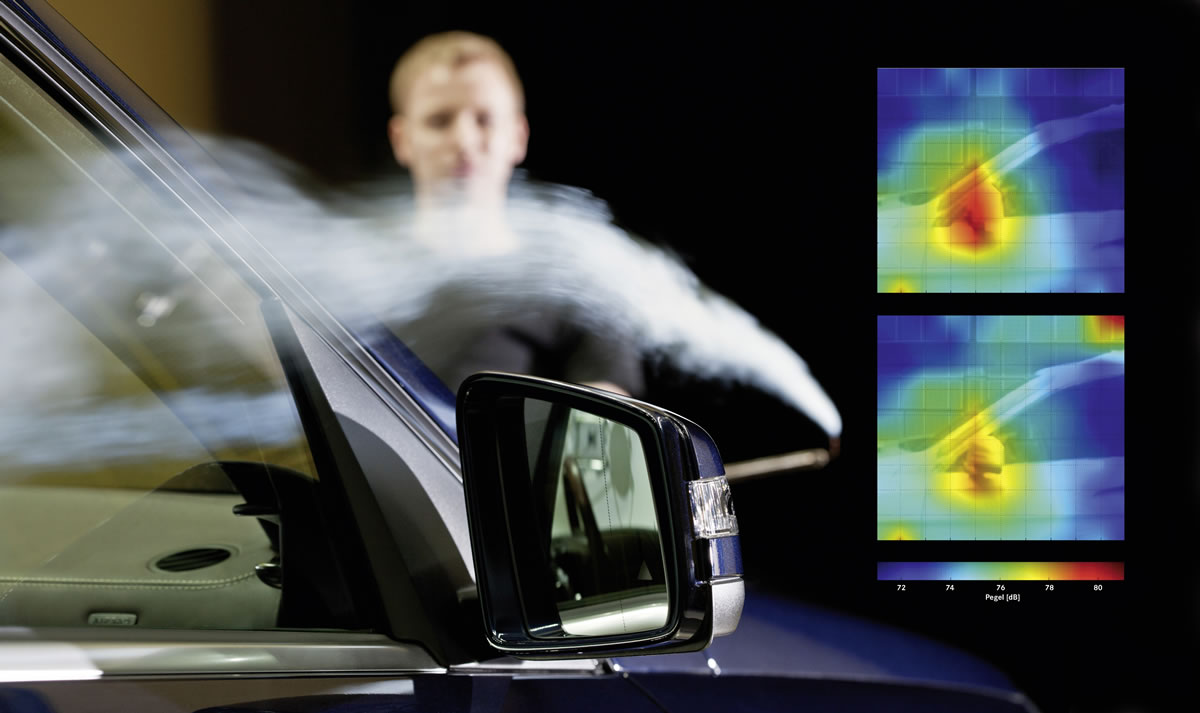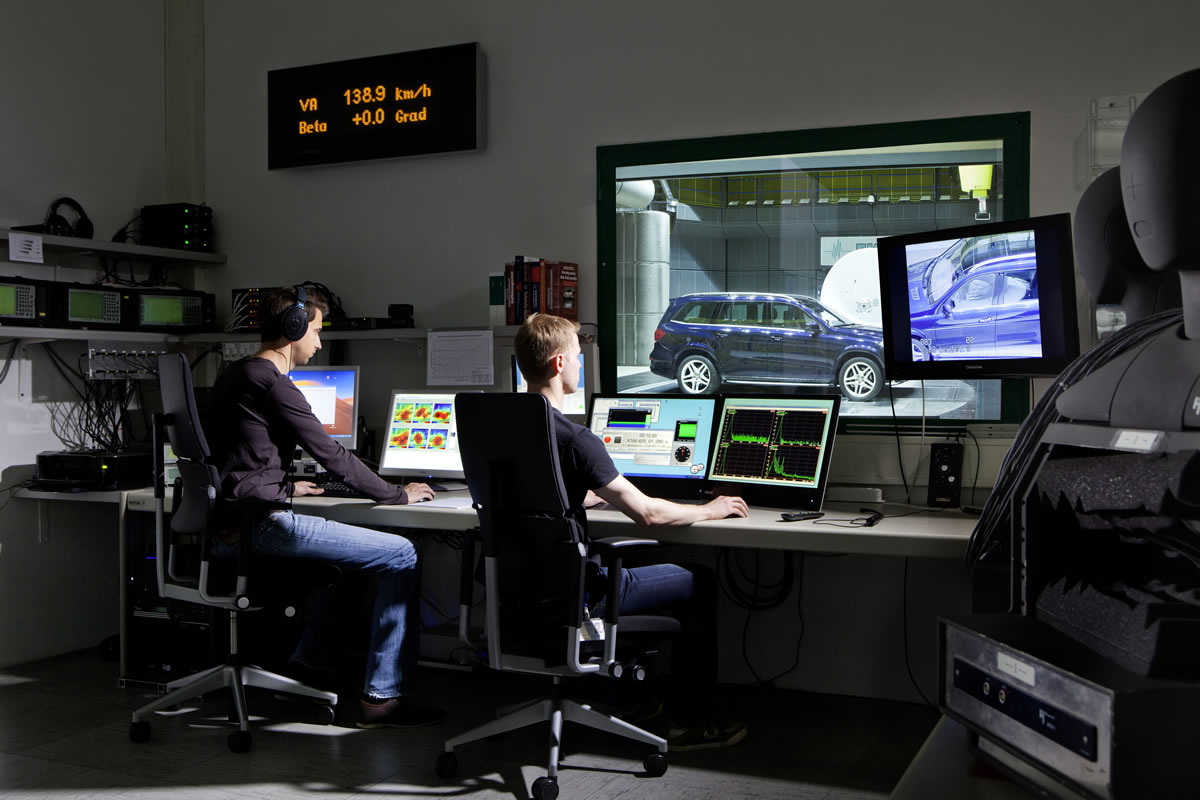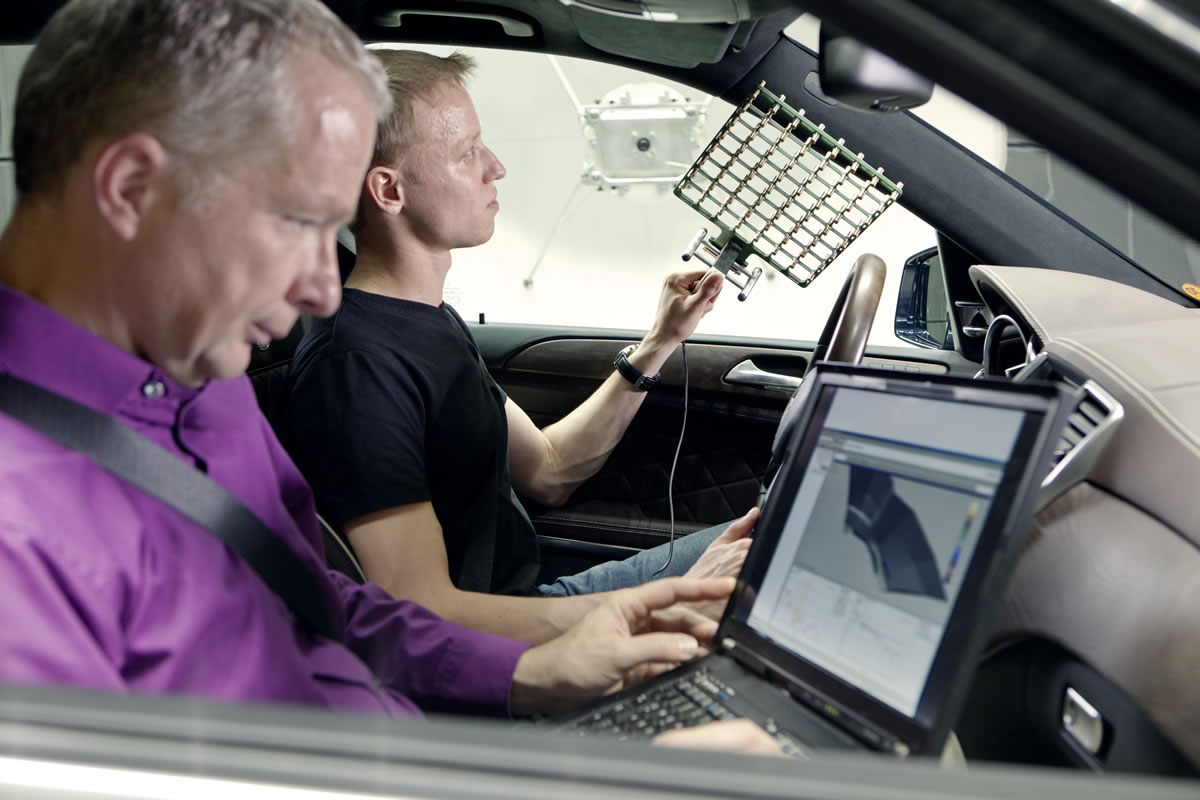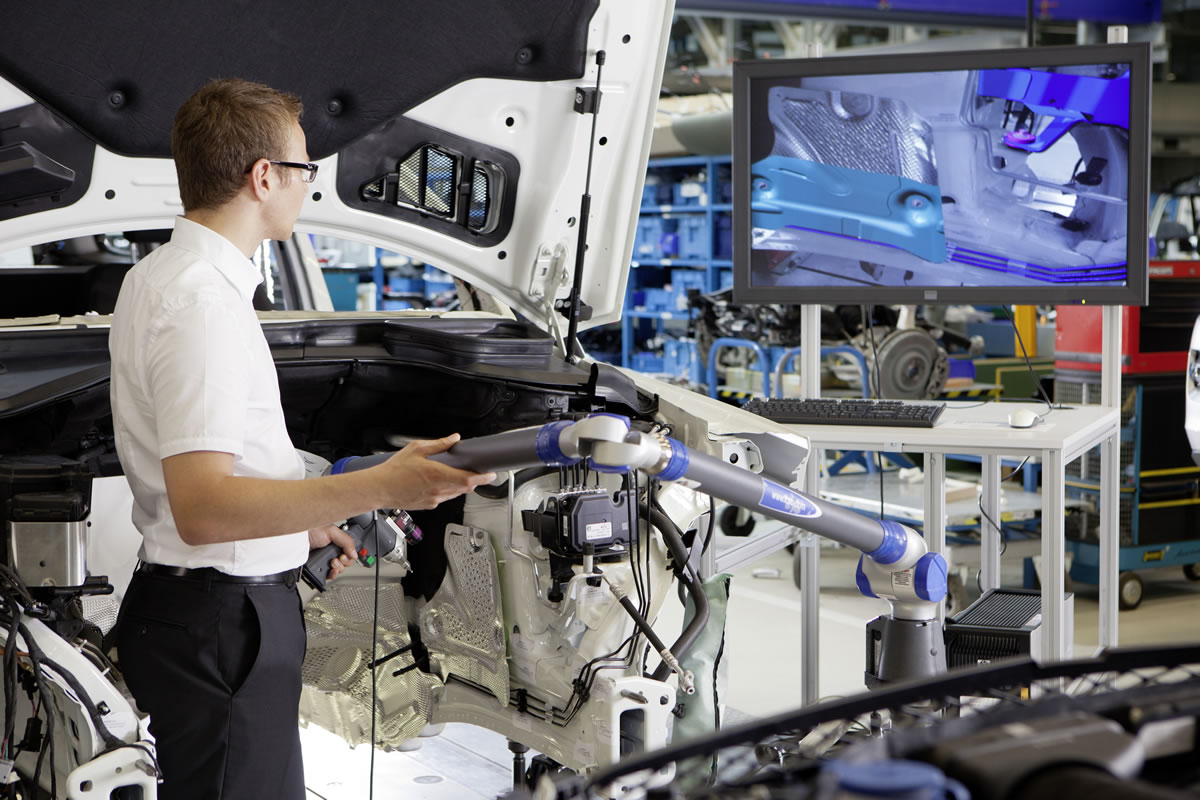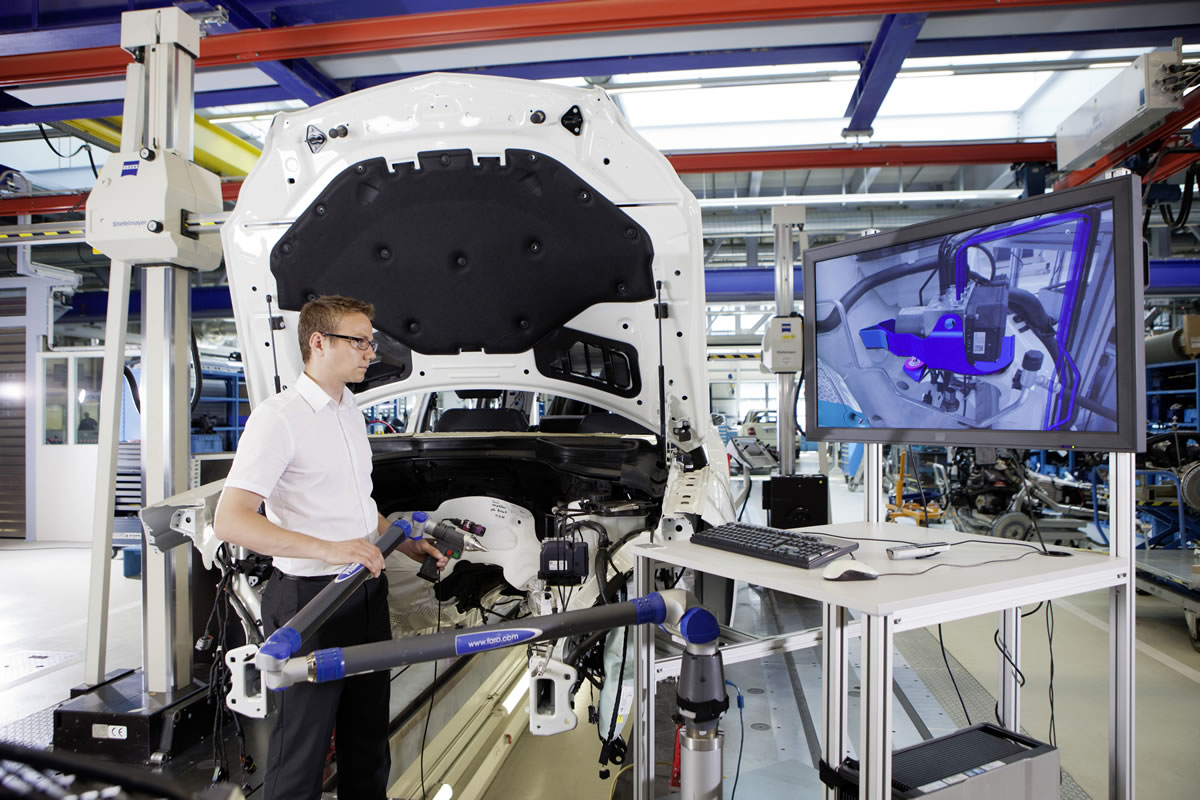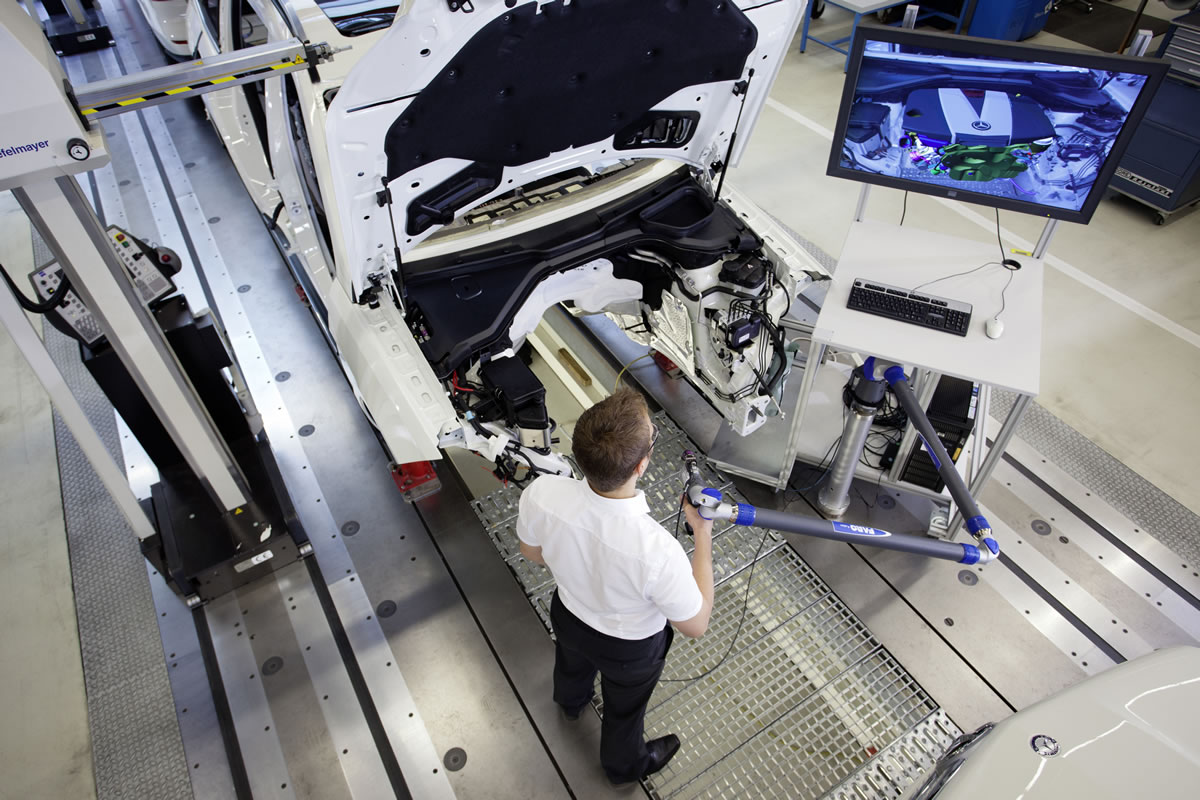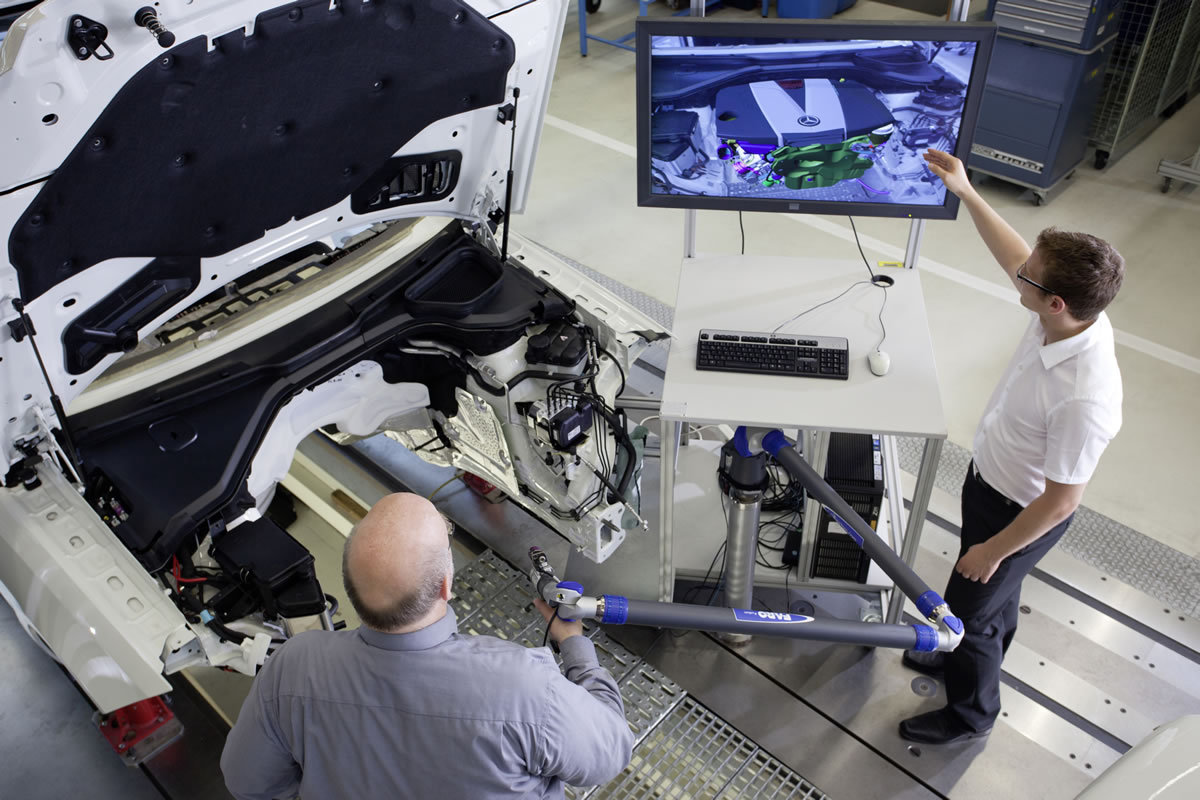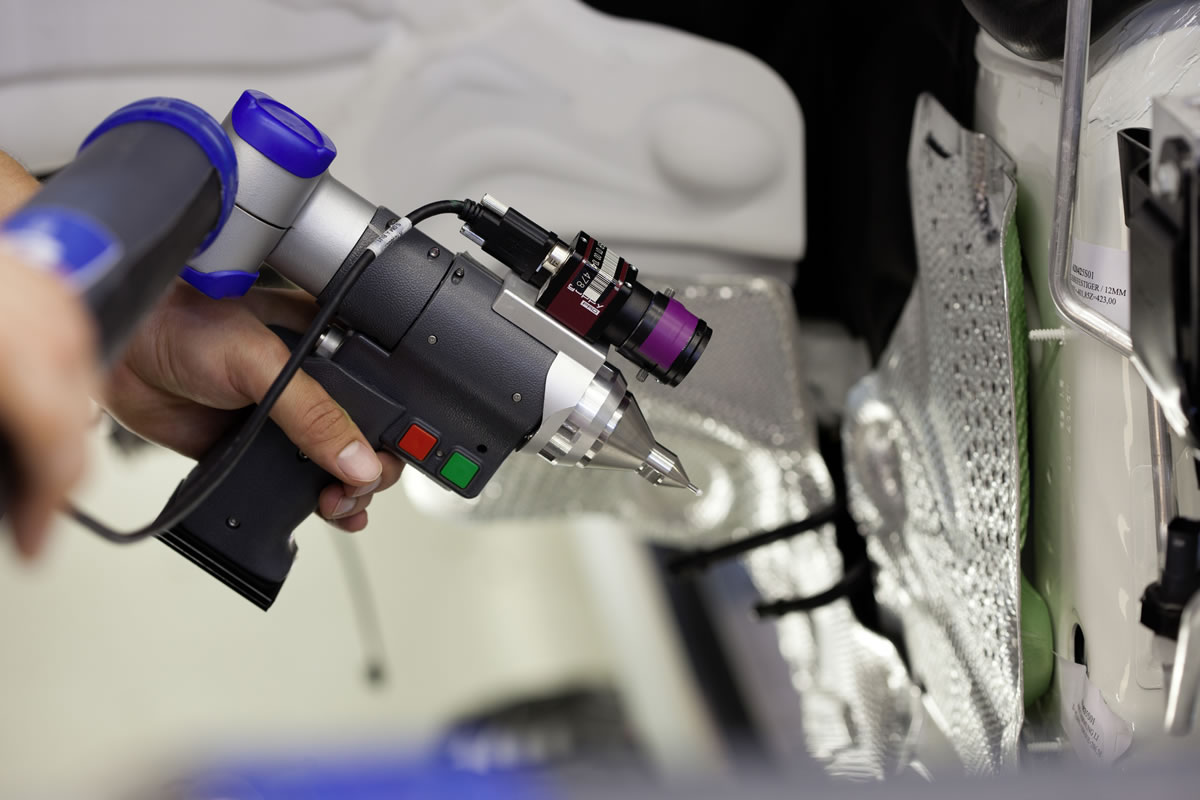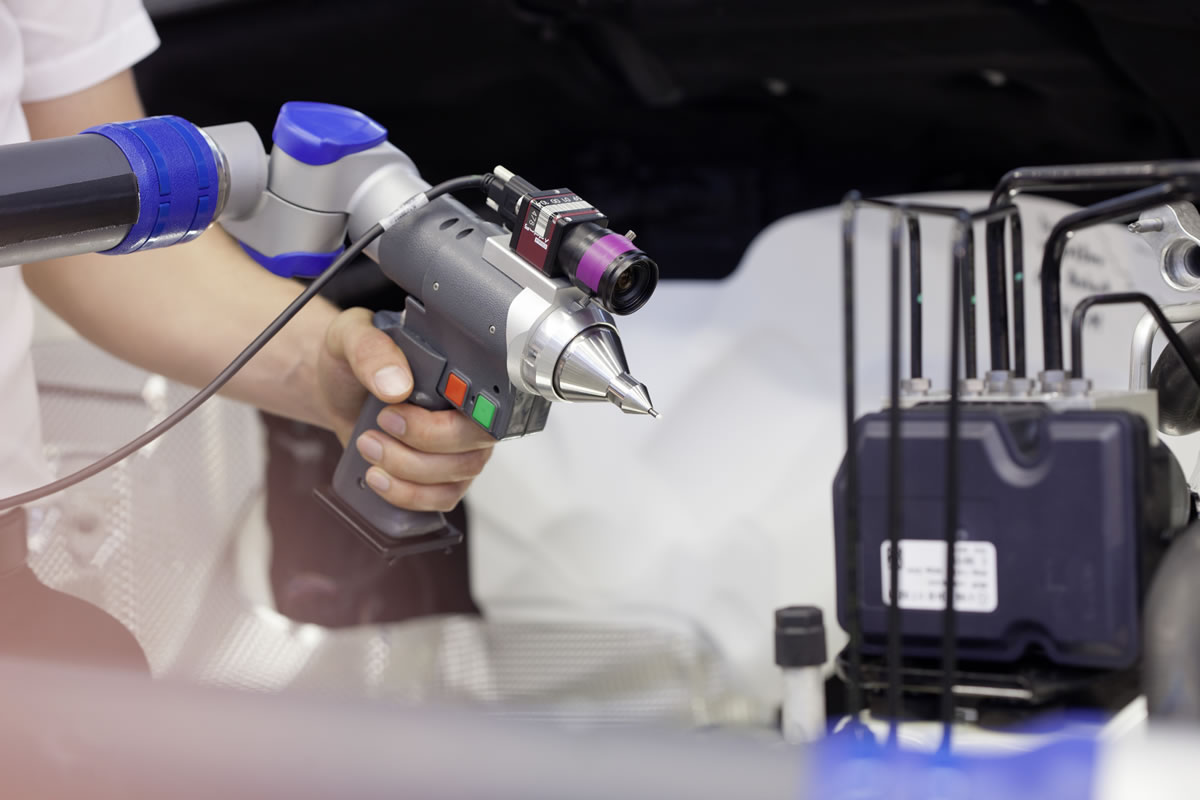For the first time in a vehicles development, Mercedes-Benz took full advantage of their Mixed Reality development tool. Designing and developing the new 2013 GL-Class. With this augmented reality, developers were able to speed up the entire design and development process, testing different scenarios in the digital world before implementing changes to the real world models.
In the past, digital and real processes ran consecutively. Initially, to ensure solutions were viable to put to realworld tests, early studies were conducted in a virtual environment during the development phase as well as mock-ups and part builds, such as seating configurations for ergonomic studies or complete vehicle prototypes, were then produced. Engineers then made decisions either using computers in the virtual world or directly affecting the real builds. Mixed Reality linked these two worlds, the digital and the real, thus introducing completely new development perspectives. Modifications and new concepts from the virtual world can now be visualised, checked and assessed directly in the real-life environment.
Combining a virtual engine with a real vehicle
Mixed Reality first uses a camera to capture photos of a particular area of the prototype, such as the engine compartment. The precise spatial relationship between the real-life and digital world is established using tracking systems, which precisely determine the current position of the video camera in relation to the overall vehicle. These video images are then displayed on a monitor and a variety of different components are “installed” virtually. Typical examples of application include positioning new electrical components such as wiring harnesses or control units, optimised heat shields or hydraulic functional units such as the brake force booster with corresponding lines. However, it is also possible to conduct installation tests with new engine configurations. In this case, the engineers assess whether a modified engine will fit in the existing installation space or if it can be easily mounted during the production process. Special spatial analyses are used by developers to assess the accessibility of individual components within the engine compartment to ensure that installation and maintenance work can be easily carried out on the vehicle at a future date. The first validation of virtual models is taking place in the real world with the use of Mixed Reality. This process has meanwhile been firmly integrated into the Mercedes-Benz development program.
15 years of production in Tuscaloosa
With the start of production of the new GL-Class in the US automotive plant in Tuscaloosa, Alabama, an inspiring success story that began 15 years ago is being updated. Production in the plant started in 1997 following the ground-breaking ceremony in 1995. The site manufactured the Mercedes-Benz M-Class and later added the GL-Class and R-Class SUVs. In 2009 the plant employees had the opportunity to celebrate a very special anniversary: the one-millionth SUV, an ML 350 BlueTEC, left the production plant. In 2011 the plant produced more than 148,000 vehicles and employed approximately 2,800 people by year’s end.
Starting in 2014, the next generation of the current C-Class for the North American market will also be produced at the Mercedes-Benz plant in Tuscaloosa, and in 2015 a fifth Mercedes-Benz model series will be added to the production portfolio.
